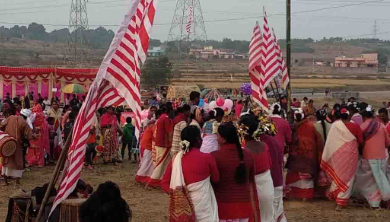7667766266
enquiry@shankarias.in
Prelims – Social Geography of India
Mains (GS I) - Salient features of Indian Society, Diversity of India.
Adivasis in Jharkhand and the larger Chhotanagpur region will welcome the new year and the spring season with the Sarhul festival on Tuesday.

At present, under the census, there are codes for only six religions: Hinduism, Islam, Christianity, Sikhism, Buddhism and Jainism.